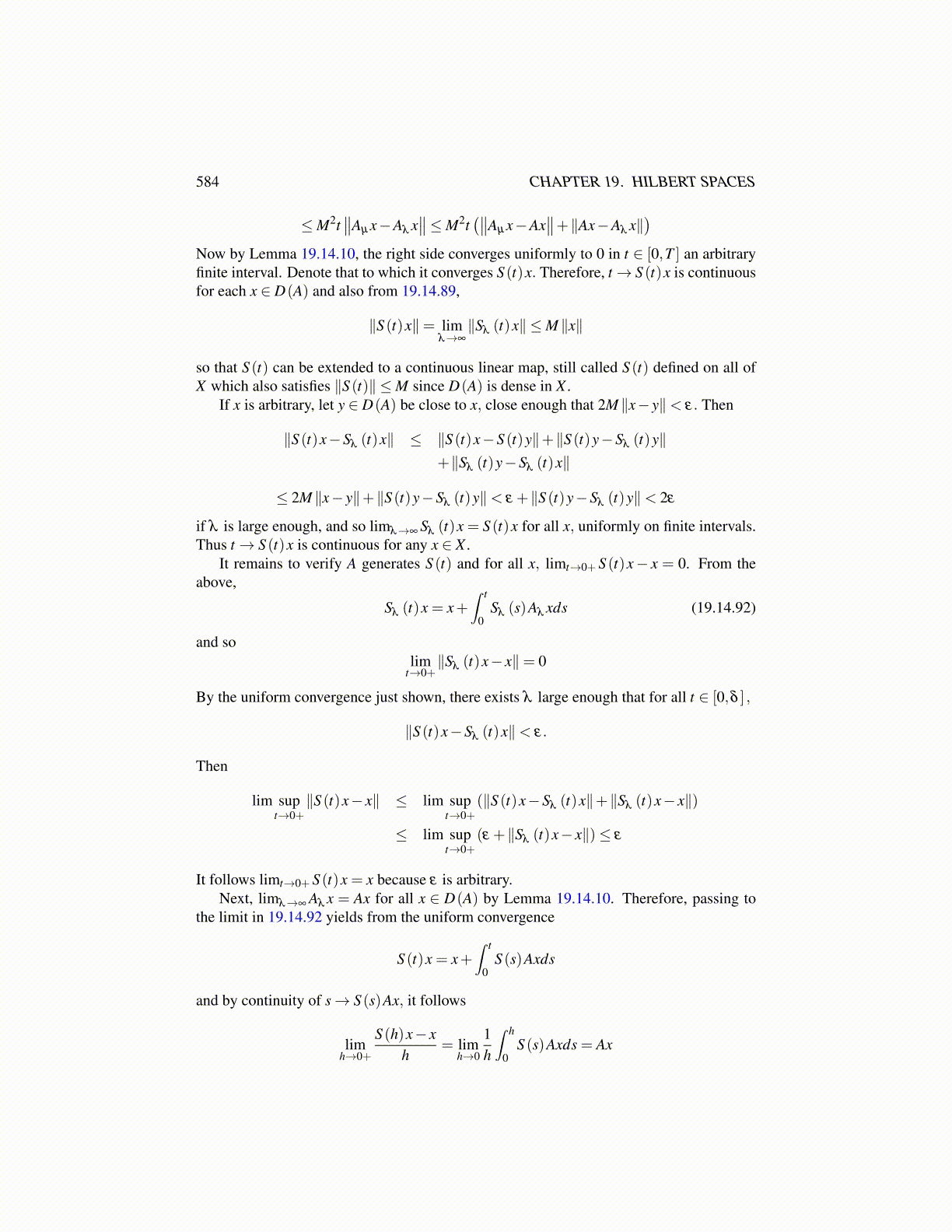
584 CHAPTER 19. HILBERT SPACES
≤M2t∥∥Aµ x−Aλ x
∥∥≤M2t(∥∥Aµ x−Ax
∥∥+∥Ax−Aλ x∥)
Now by Lemma 19.14.10, the right side converges uniformly to 0 in t ∈ [0,T ] an arbitraryfinite interval. Denote that to which it converges S (t)x. Therefore, t→ S (t)x is continuousfor each x ∈ D(A) and also from 19.14.89,
∥S (t)x∥= limλ→∞
∥Sλ (t)x∥ ≤M ∥x∥
so that S (t) can be extended to a continuous linear map, still called S (t) defined on all ofX which also satisfies ∥S (t)∥ ≤M since D(A) is dense in X .
If x is arbitrary, let y ∈ D(A) be close to x, close enough that 2M ∥x− y∥< ε. Then
∥S (t)x−Sλ (t)x∥ ≤ ∥S (t)x−S (t)y∥+∥S (t)y−Sλ (t)y∥+∥Sλ (t)y−Sλ (t)x∥
≤ 2M ∥x− y∥+∥S (t)y−Sλ (t)y∥< ε +∥S (t)y−Sλ (t)y∥< 2ε
if λ is large enough, and so limλ→∞ Sλ (t)x = S (t)x for all x, uniformly on finite intervals.Thus t→ S (t)x is continuous for any x ∈ X .
It remains to verify A generates S (t) and for all x, limt→0+ S (t)x− x = 0. From theabove,
Sλ (t)x = x+∫ t
0Sλ (s)Aλ xds (19.14.92)
and solim
t→0+∥Sλ (t)x− x∥= 0
By the uniform convergence just shown, there exists λ large enough that for all t ∈ [0,δ ] ,
∥S (t)x−Sλ (t)x∥< ε.
Then
lim supt→0+
∥S (t)x− x∥ ≤ lim supt→0+
(∥S (t)x−Sλ (t)x∥+∥Sλ (t)x− x∥)
≤ lim supt→0+
(ε +∥Sλ (t)x− x∥)≤ ε
It follows limt→0+ S (t)x = x because ε is arbitrary.Next, limλ→∞ Aλ x = Ax for all x ∈ D(A) by Lemma 19.14.10. Therefore, passing to
the limit in 19.14.92 yields from the uniform convergence
S (t)x = x+∫ t
0S (s)Axds
and by continuity of s→ S (s)Ax, it follows
limh→0+
S (h)x− xh
= limh→0
1h
∫ h
0S (s)Axds = Ax